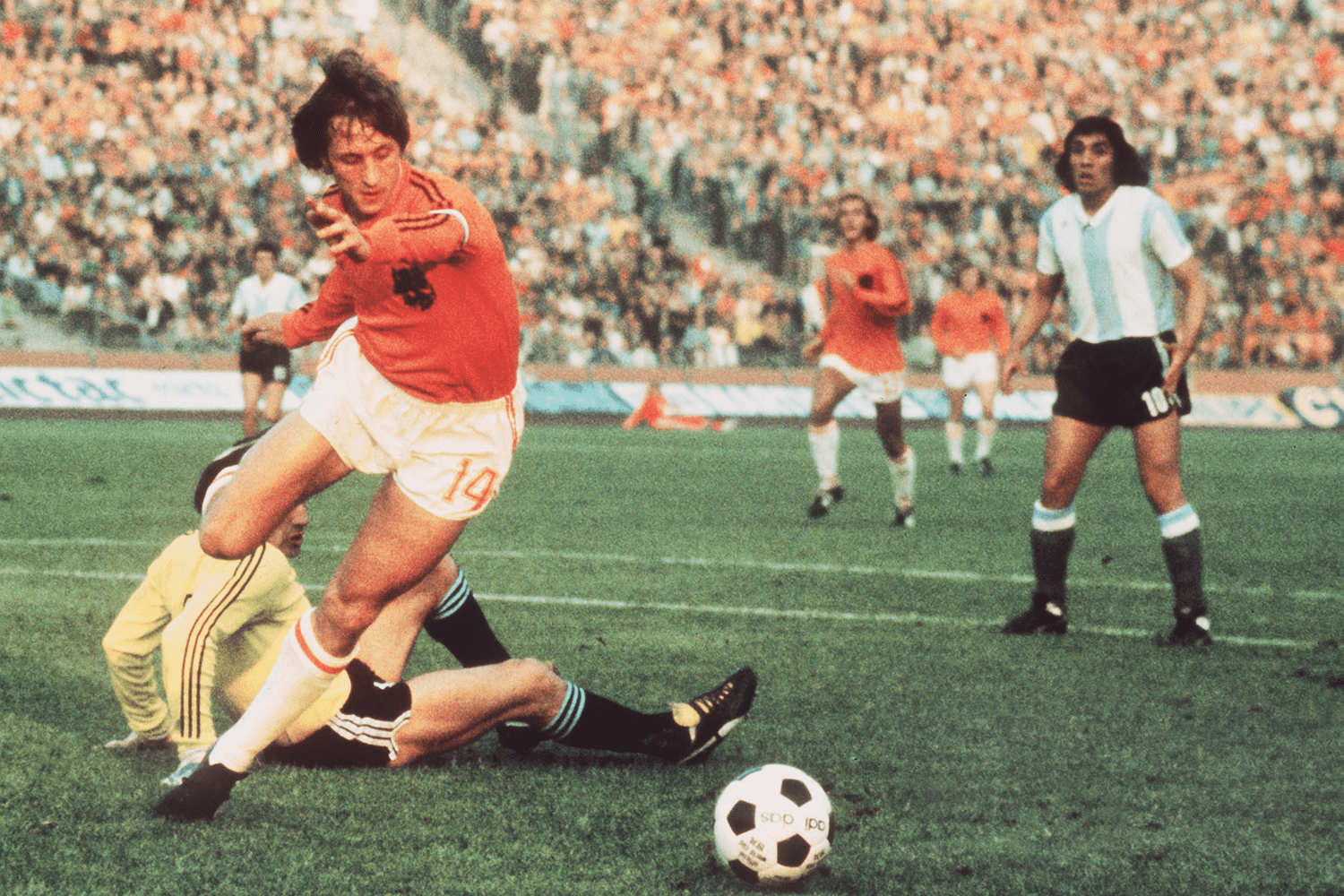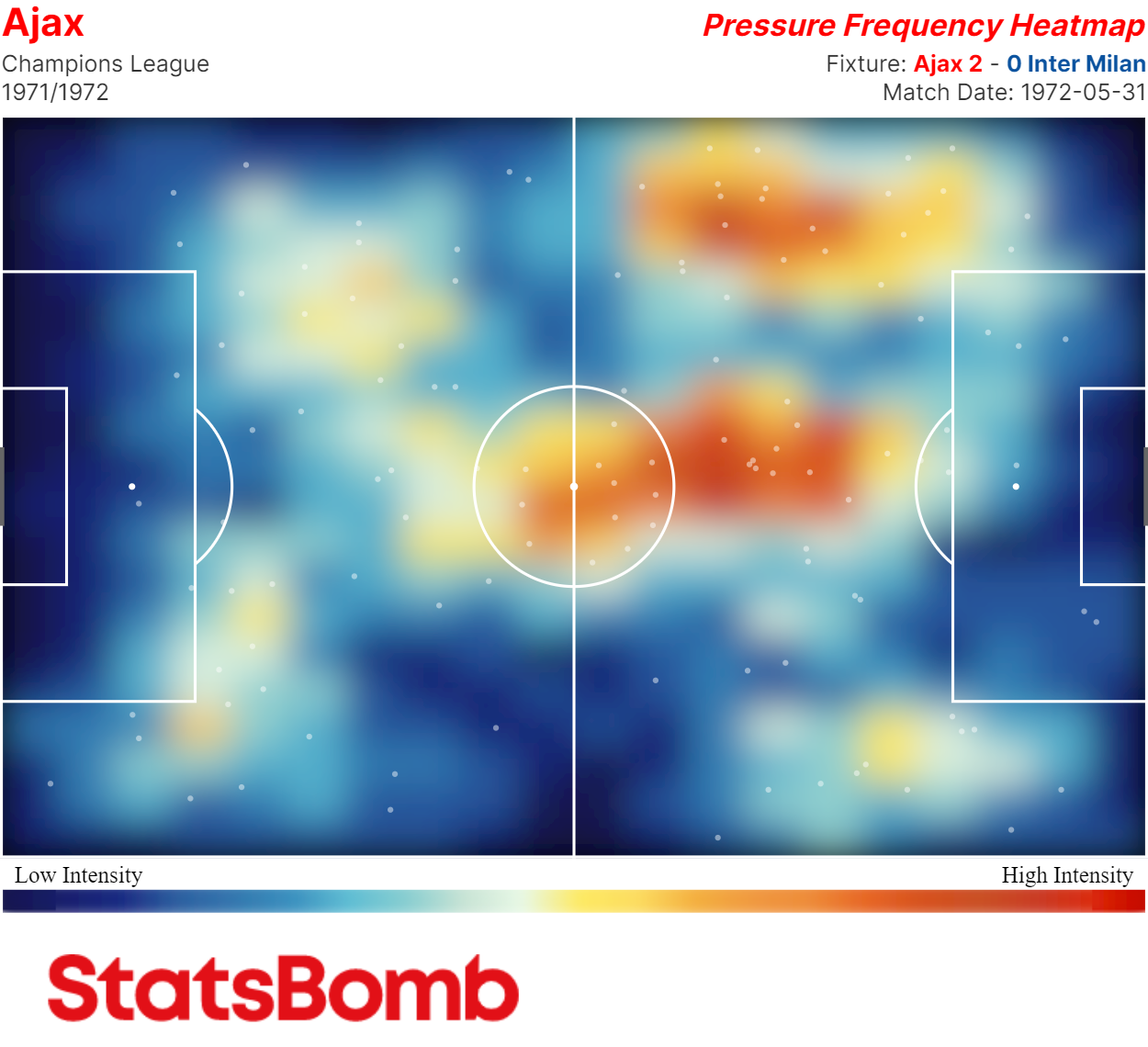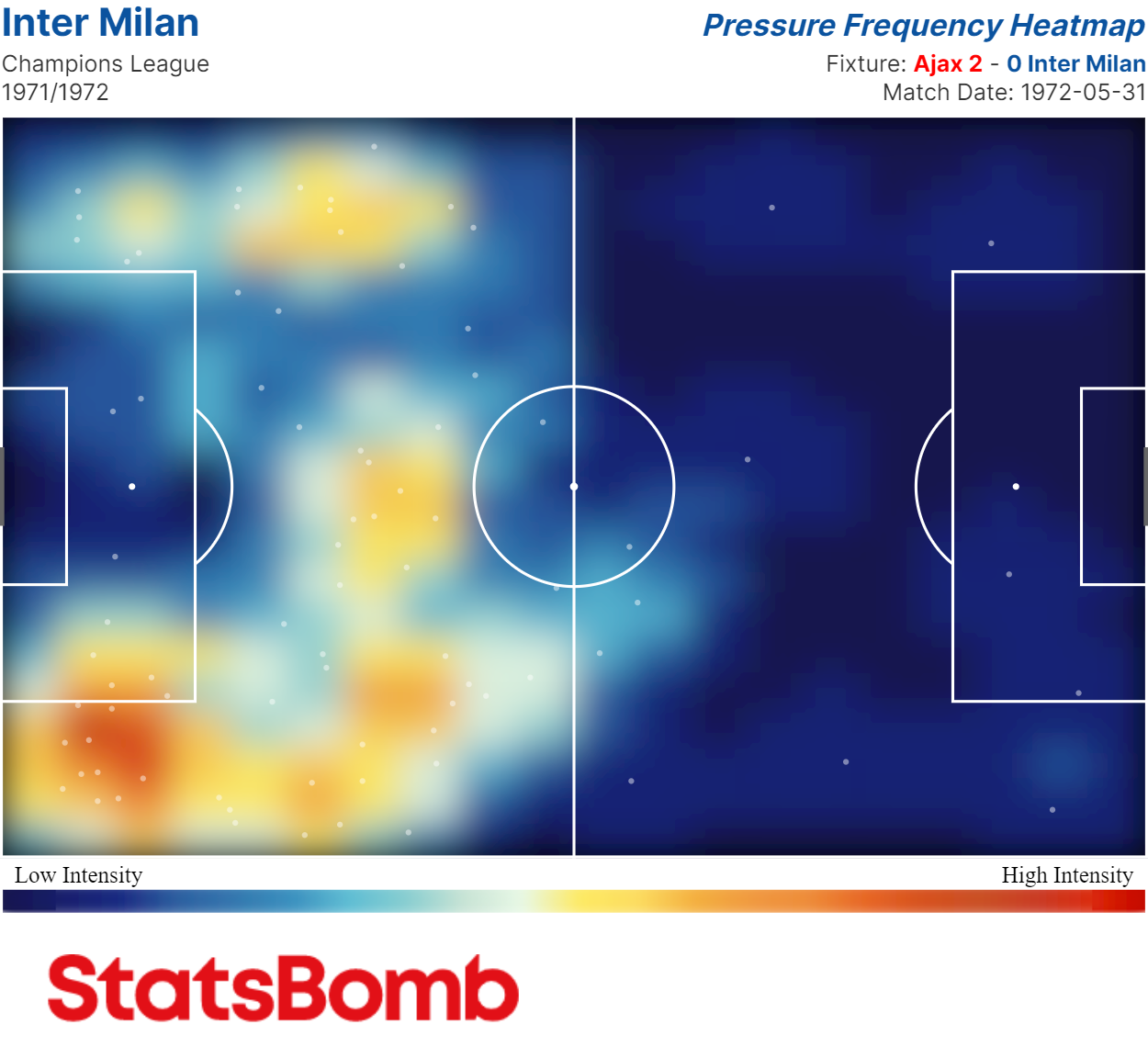This summer, we've been celebrating the 10th anniversary of the StatsBomb blog. To mark the milestone, we've interviewed several members of the early analytics community and released full event data for the 2015/16 Big 5 Leagues as a gift to today's community. But we've kept one more surprise up our sleeve. Let us introduce the StatsBomb Icons series, starting with one of the most influential figures in the history of the game, Johan Cruyff.
There'll be three parts to the Icons series this summer, consisting of three data releases, with complete StatsBomb event data for a selection of matches for each release made available via our GitHub. We'll update the links here when the other Icons become available.
1. Johan Cruyff
3. Pelé
A winner of three Ballon d'Or's, Johan Cruyff was the centrepiece of the Ajax and Netherlands sides of the 1970s that played 'Total Football', a refined style of play in which players regularly rotated positions in possession and employed an aggressive high press out of it. Cruyff went on to be a successful manager of Ajax and Barcelona, retaining many of the central principles of Total Football in his coaching (and influencing a young midfield anchor in Josep Guardiola in the process).
The Cruyff dataset contains ten matches from his playing career: the three finals of the European Cups won by Ajax in 1971, 1972, and 1973; five matches from the 1974 World Cup with the Netherlands; and two from his time at Barcelona.
We'll explain how to access the data at the bottom of this article, but first, we've analysed the data ourselves to see what we can learn about one of the greatest footballers to have ever played the game.
Analysing Johan Cruyff
Part 1: Ajax (1971-1973)
When Ajax reached the European Cup final in the 1970/71 season, they were established as one of the best teams on the continent. Manager Rinus Michels had been in charge for six years, a 24-year-old Cruyff had been in the side for seven, and they'd won several Eredivisie titles and domestic cup trophies as well as reaching the European Cup final just two years earlier (losing 4-1 to AC Milan).
Hoping to stop Ajax from winning a first European Cup were Greek champions Panathinaikos, managed by a certain Ferenc Puskás. But they were powerless to stop Cruyff and Ajax. Within five minutes of kick-off, Dick van Dijk headed home Piet Keizer's near-post cross from the left and Ajax never looked back.
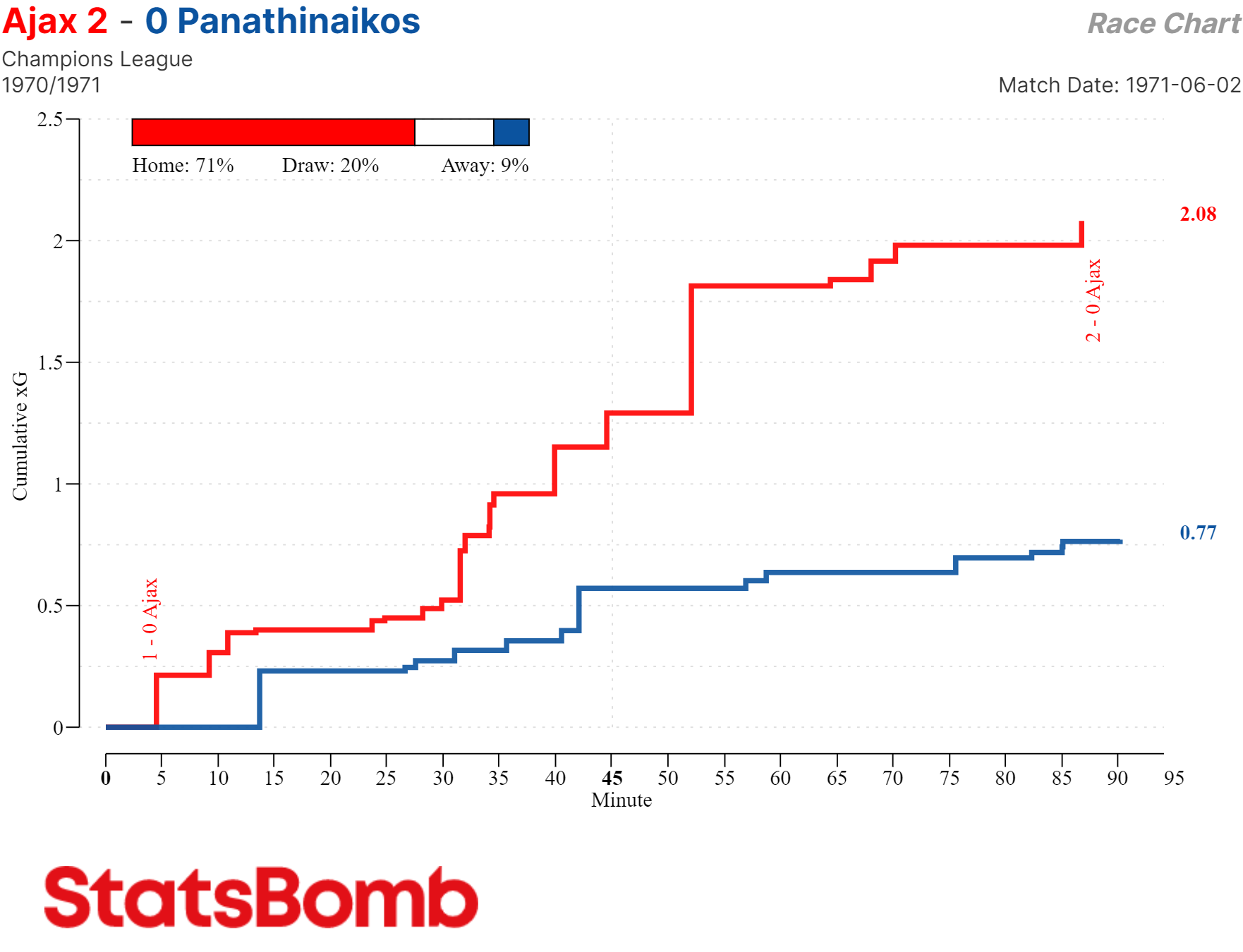
Panathinaikos struggled to contain Cruyff, who completed 13/15 dribbles playing in a very advanced left-wing role, with van Dijk playing as the 'False 9', charged with dropping in and progressing the ball to the final third. Late in the match, Cruyff set up Arie Haan with a trademark mazy dribble and deft throughball to secure the first of Ajax's three consecutive European Cup triumphs.
Rinus Michels departed Ajax for Barcelona in the summer of 1971, so Ștefan Kovács would lead Ajax to their second European Cup final, this time against Inter. Both Cruyff and Ajax excelled in 1971/72 under Kovács' tutelage: Cruyff won his first Ballon d'Or at the end of 1971, and Ajax had a perfect home record in the league, suffering just one defeat in the entire season and winning both the Eredivisie and the KNVB cup. A European Cup win would secure the treble.
This game holds a significant place in the footballing tapestry as it's seen as the death of Catenaccio, with the torch passed to Ajax's Total Football. Inter just didn't commit enough men forward when attacking, and Ajax were able to control and dominate the game, with Cruyff – scoring both goals in the False 9 role – and teammates rotating and interchanging relentlessly to find openings inside the Inter defensive block. Cruyff's desire to hunt for space, and his ability to spin his defender and carry the ball into dangerous areas, was particularly evident in this game.
The pressure maps are perhaps the best illustration of the contrast between Total Football and Catenaccio. Ajax pressed high and aggressively, applying 123 pressures with 74 (60%) in the opposition half – 8/25 of their shots came from their high press. Inter sat off, with just 11/82 pressures (13%) exerted in Ajax's half.
If the win over Inter was the dagger to the Catenaccio heart, Ajax's 1-0 win over Juventus a year later was the final nail in the coffin.
This performance was vintage Ajax, as they took an early lead but continued to dominate the match regardless. The 1-0 final score masks that Ajax had 31 shots to Juventus' 11 and racked up 2.44 expected goals to Juve's 0.76. Juve couldn't live with them.
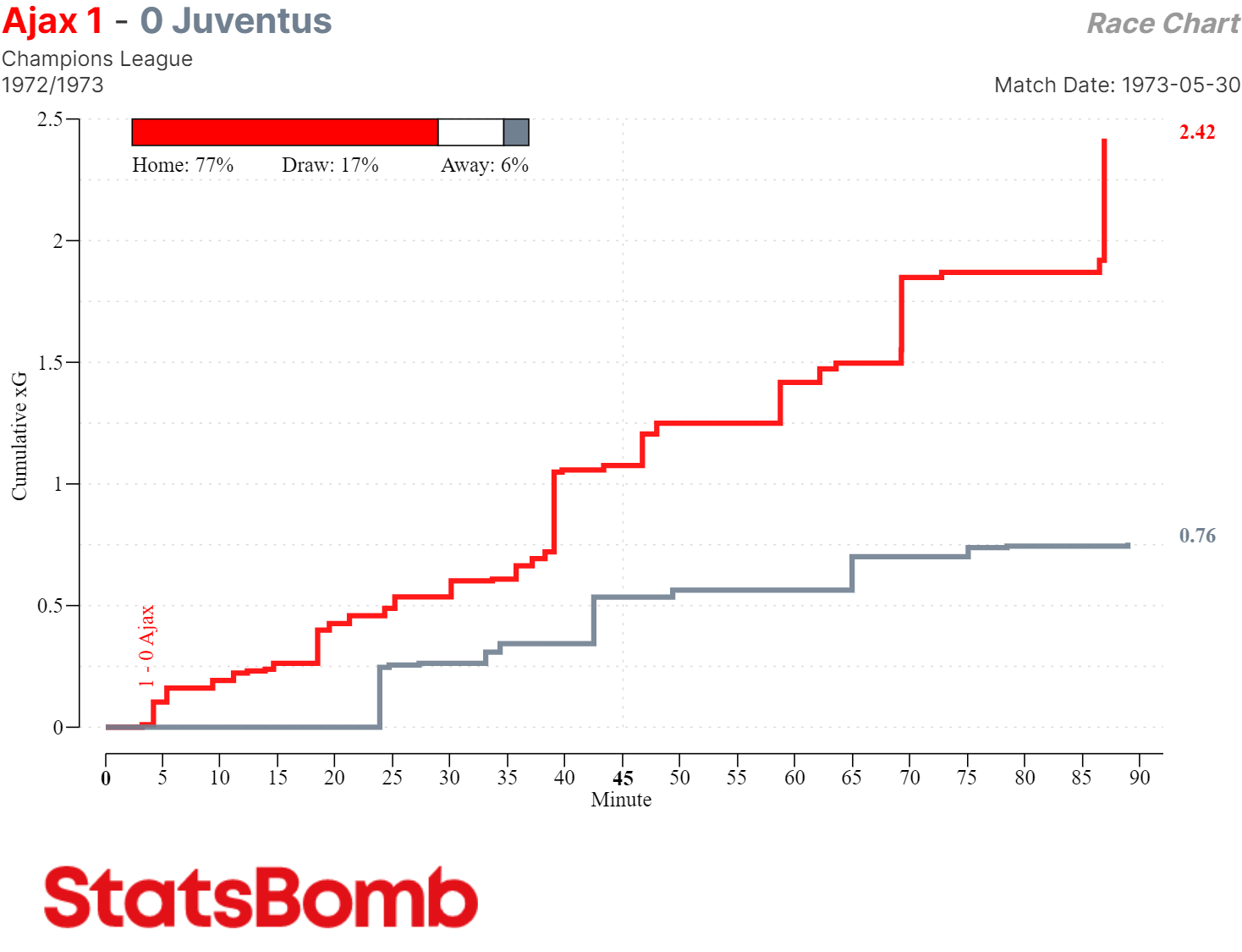
The win secured Ajax's third consecutive European Cup and second successive treble. The team had well and truly written themselves into footballing history.
Part 2: Barcelona (1973-1974)
In the summer of 1973, Barcelona parted with a then-world record fee to bring Cruyff to the Camp Nou and reunite him with manager Rinus Michels.
Cruyff slotted straight as the False 9 in Michels' preferred 4-3-3 and contributed 16 goals as he helped Barça to their first La Liga title in 14 years. Cruyff's continued excellence won him his second Ballon d'Or at the end of 1973.
In February, they travelled to the Bernabeu to face arch-rivals Real Madrid in the 2nd El Classico of the season. Barcelona were 1st in the table coming into the game, with Real in 7th, and the difference in class between the two teams was glaring. Barça ran out 5-0 winners in one of the most iconic El Classicos of all time – with Cruyff putting in one of his greatest-ever performances.
His goal – Barcelona's 2nd – displayed the close control and quick feet that made him untouchable as a dribbler. Within four seconds in the first half, Cruyff received the ball on the edge of the Real box, deftly skipped past two defenders, shrugged off another, and then calmly stroked the ball beyond Mariano García Remón.
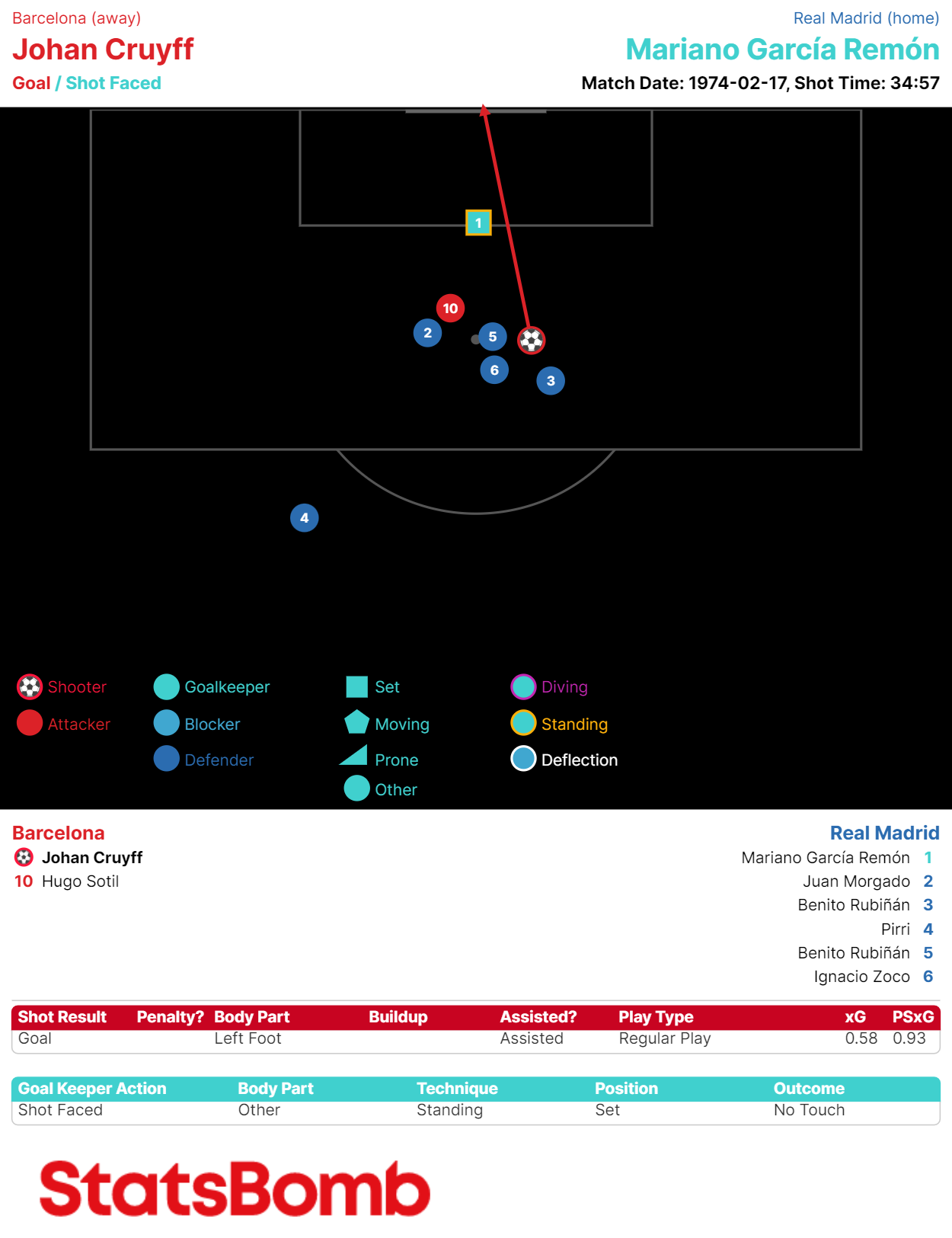
Cruyff drove Barcelona to this victory. He applied more pressures (19) than any of his teammates and received the ball all over the pitch, showing the bravery and craft to drop into wherever he felt he could affect the game.
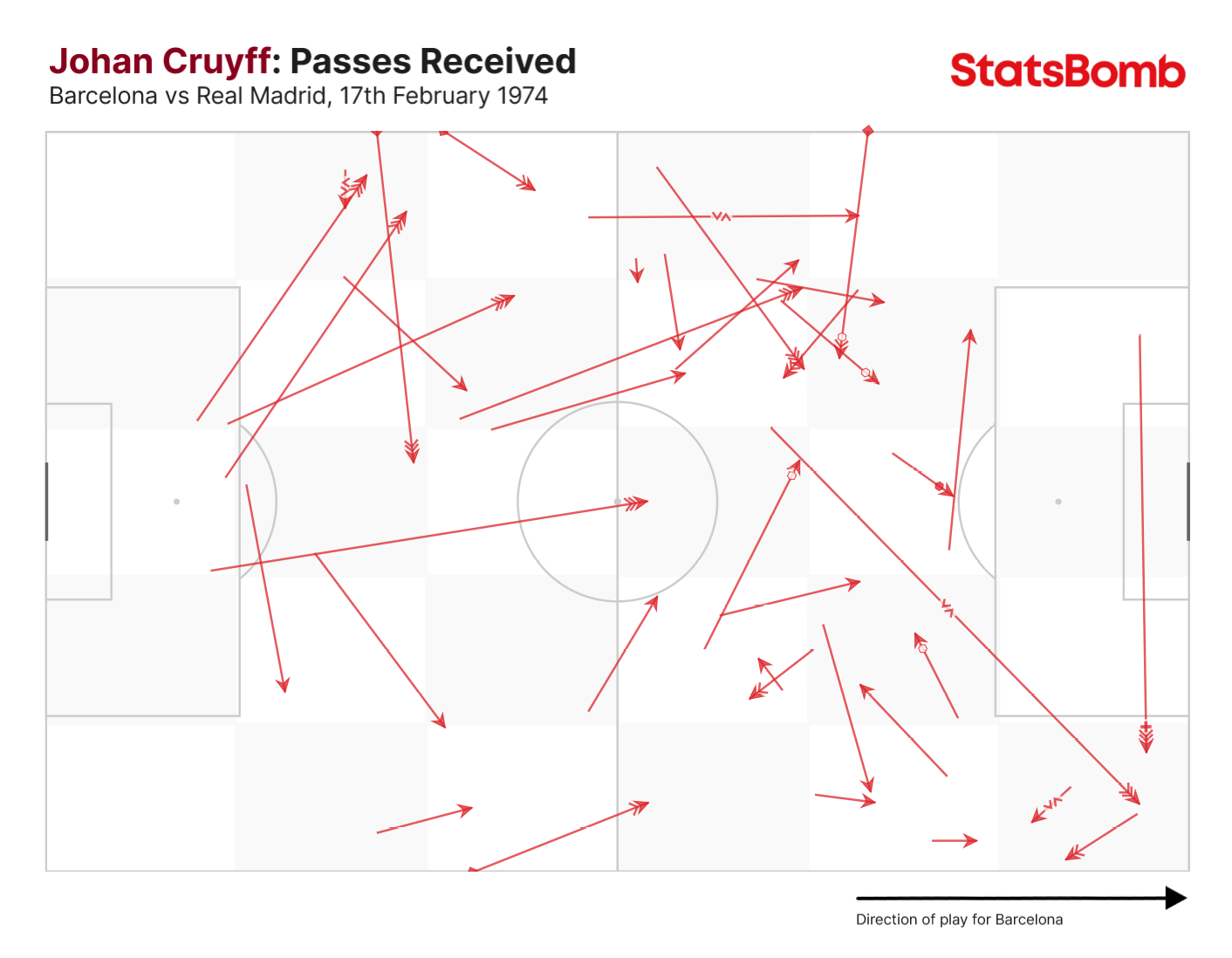
Part 3: Netherlands & The 1974 World Cup
A quick interjection. Firstly, to give Cruyff's Ajax and Netherlands teammate Ruud Krol some flowers. Krol, very much a "modern day" attacking left wing-back, displayed a great example of the technical mastery of the Dutch footballers of the 1970s during this World Cup, making nearly as many passes off his left foot (105) as he did with his right (115).
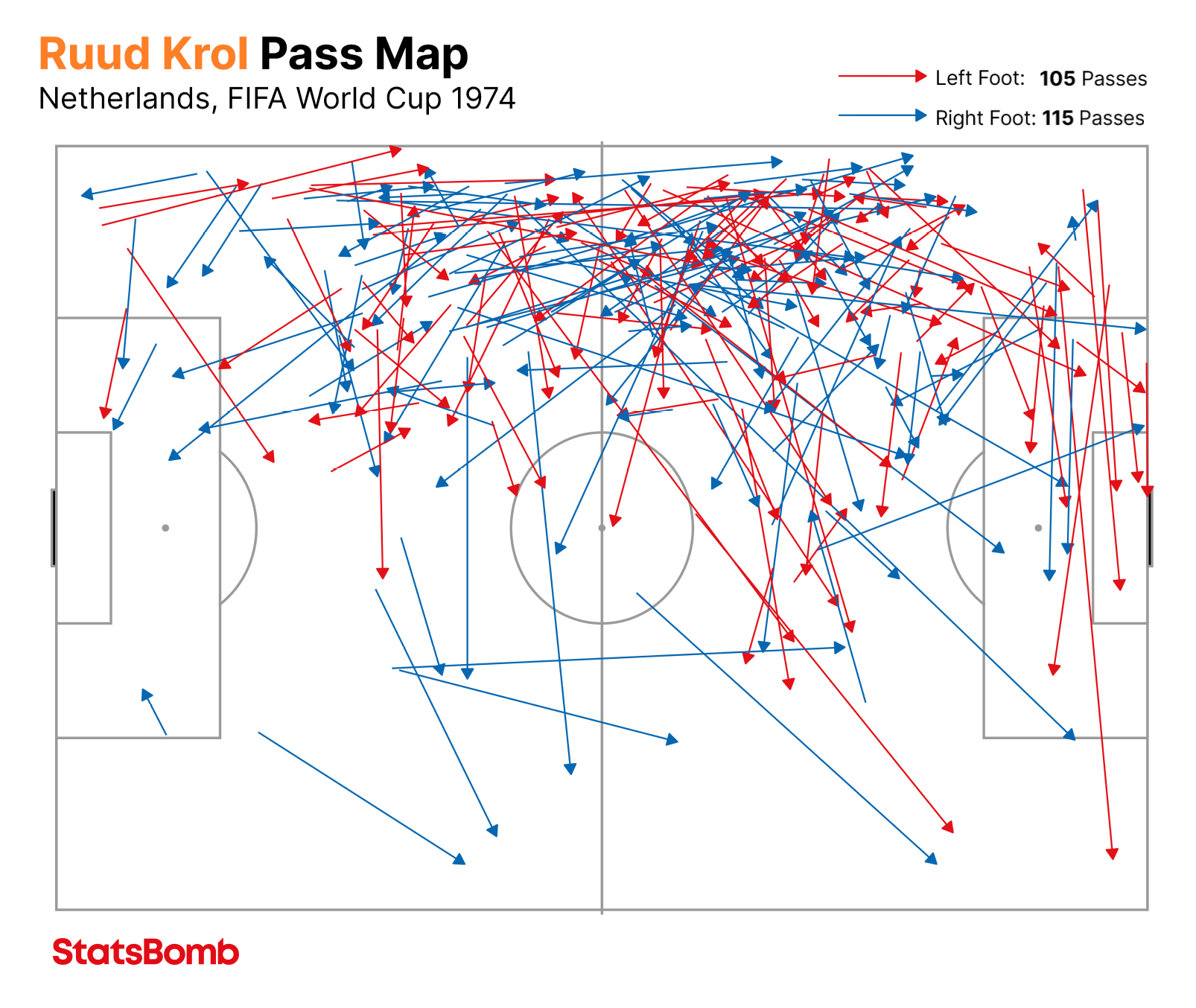
Secondly, it was common to see Cruyff and his Netherlands teammates using the outside of their boots to deliver crosses, float indirect free kicks into the box, and even shoot from direct free kicks. More of that please, modern football.
Now, onto analysing this Netherlands side, widely regarded as one of the best teams not to win the World Cup.
We're releasing five matches from the Netherlands' 1974 World Cup, who were managed by – you guessed it – Rinus Michels. They opened the tournament with a 2-0 win over Uruguay and defeated Bulgaria 4-1 in their final group match to progress to the 2nd group stage. So you might wonder why we selected the 0-0 draw versus Sweden in the second match to release?
For that, we take you to the 24th minute. Once again in the False 9 role, Cruyff receives the ball on the left flank and stands up Sweden fullback Jan Olsson. Cruyff feints to go back inside, before dragging the ball behind his standing leg to turn 180 degrees in a step that has now been seen around the world an infinite number of times: The Cruyff turn.
Career-defining moments aside, Cruyff had a typically influential game as the Dutch created more than enough pressure to win the match. He created five of the Netherlands' 30 shots and took four of them himself, but the 12 completed dribbles from 16 attempted – one in particular – stole the headlines.
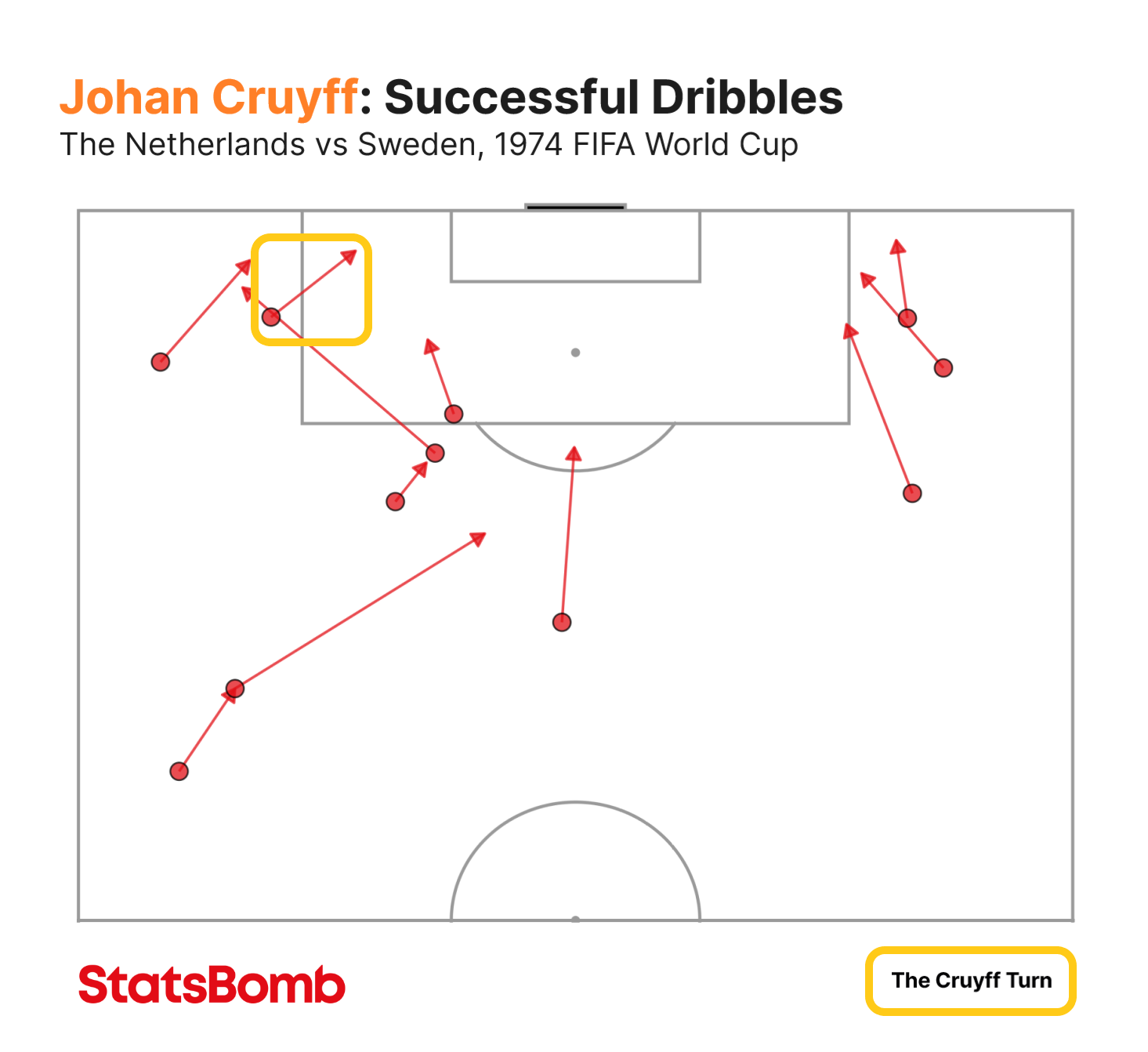
The Netherlands qualified with ease. Their reward was a second group stage containing Argentina, East Germany, and Brazil: the winner of the group would qualify for the final.
Their first match was against Argentina and was arguably the Netherlands' best performance of the tournament as they took apart their more reductive opponents. The 4-0 scoreline didn't flatter the Dutch as they outshot Argentina 18-3, controlled 58% of the possession, and entered the final third 96 times, allowing Argentina to progress into the same area just 17 times.
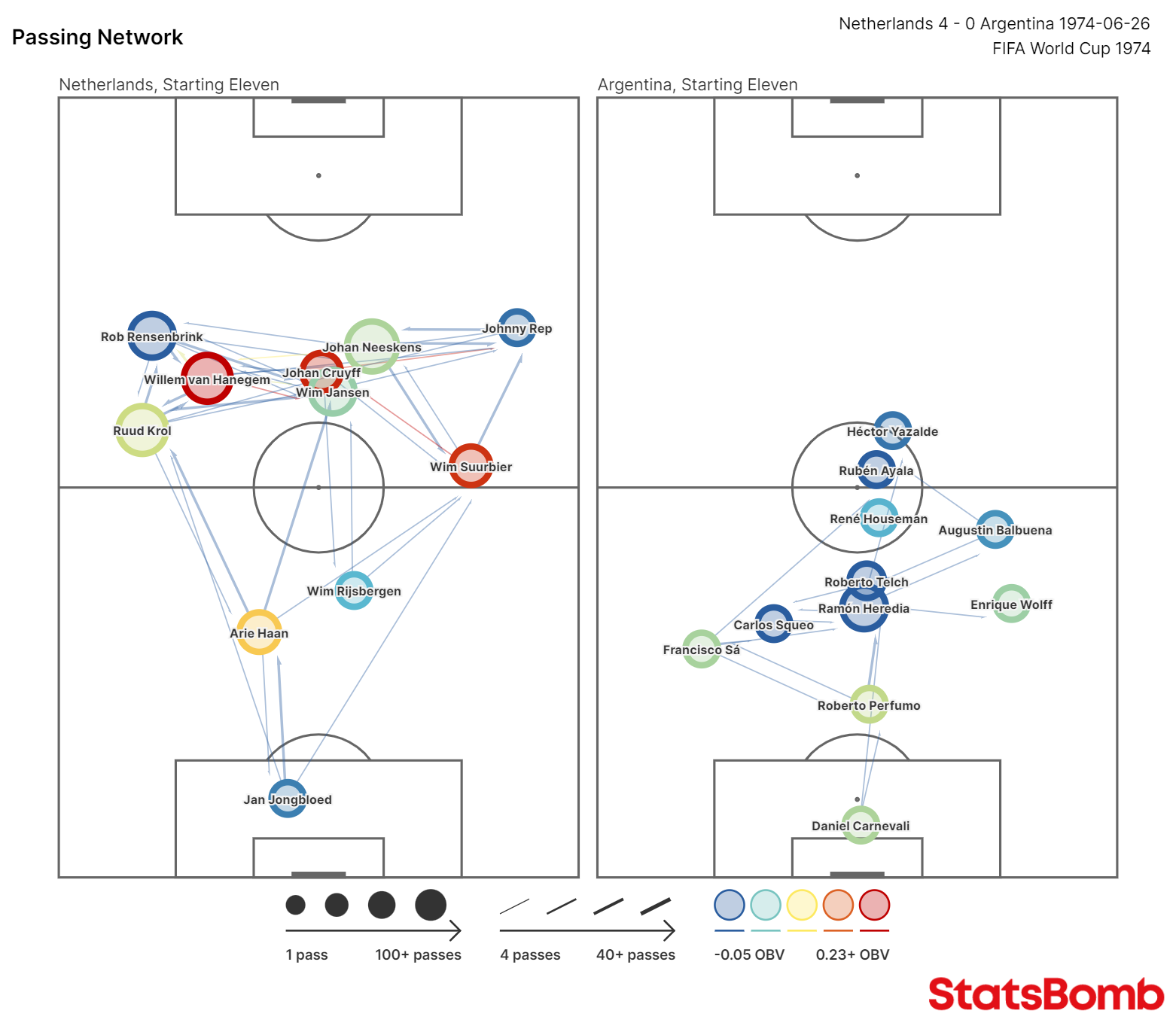
Cruyff was influential once more, scoring twice and assisting Johnny Rep with a delightful far-post cross for the fourth. His first goal was another example of his ball mastery and composure, receiving the ball behind the Argentina defence and skipping around Daniel Carnevali to pass into the empty net to give the Netherlands the lead.
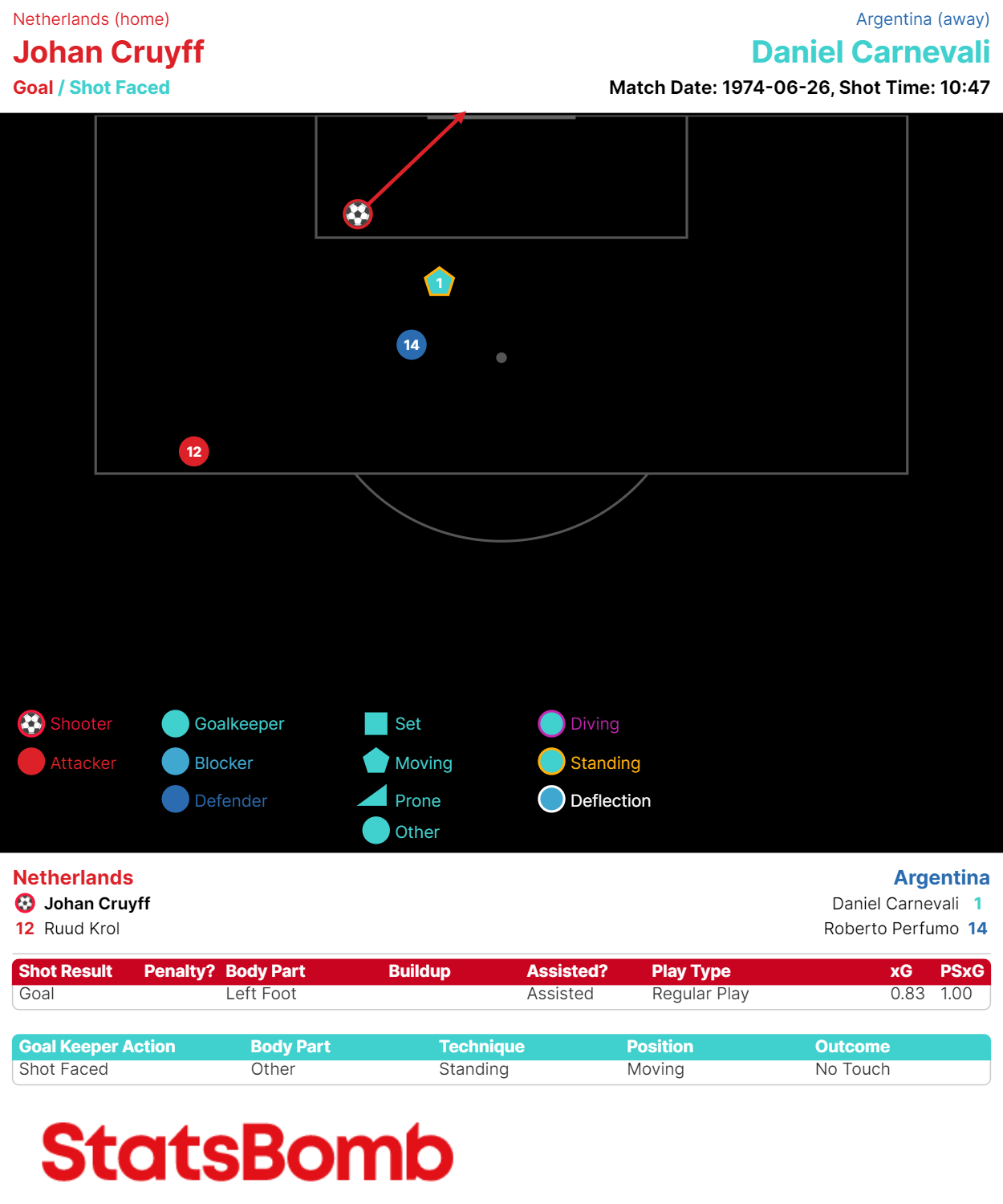
They struggled to create clear-cut chances versus East Germany, but still did enough to come away with a 2-0 victory. By his own high standards, Cruyff was quiet in this match, registering zero shots, one key pass, and only one touch in the opposition box. The East Germans paid him close attention: 24% of Cruyff's passes in this game were played under pressure – the highest rate on the Netherlands team.
They limited East Germany to 11 shots and just 0.21 xG, though how much credit they can take for this is up for debate, with the East Germans' propensity to fire shots off from anywhere. Just look at this shot map.
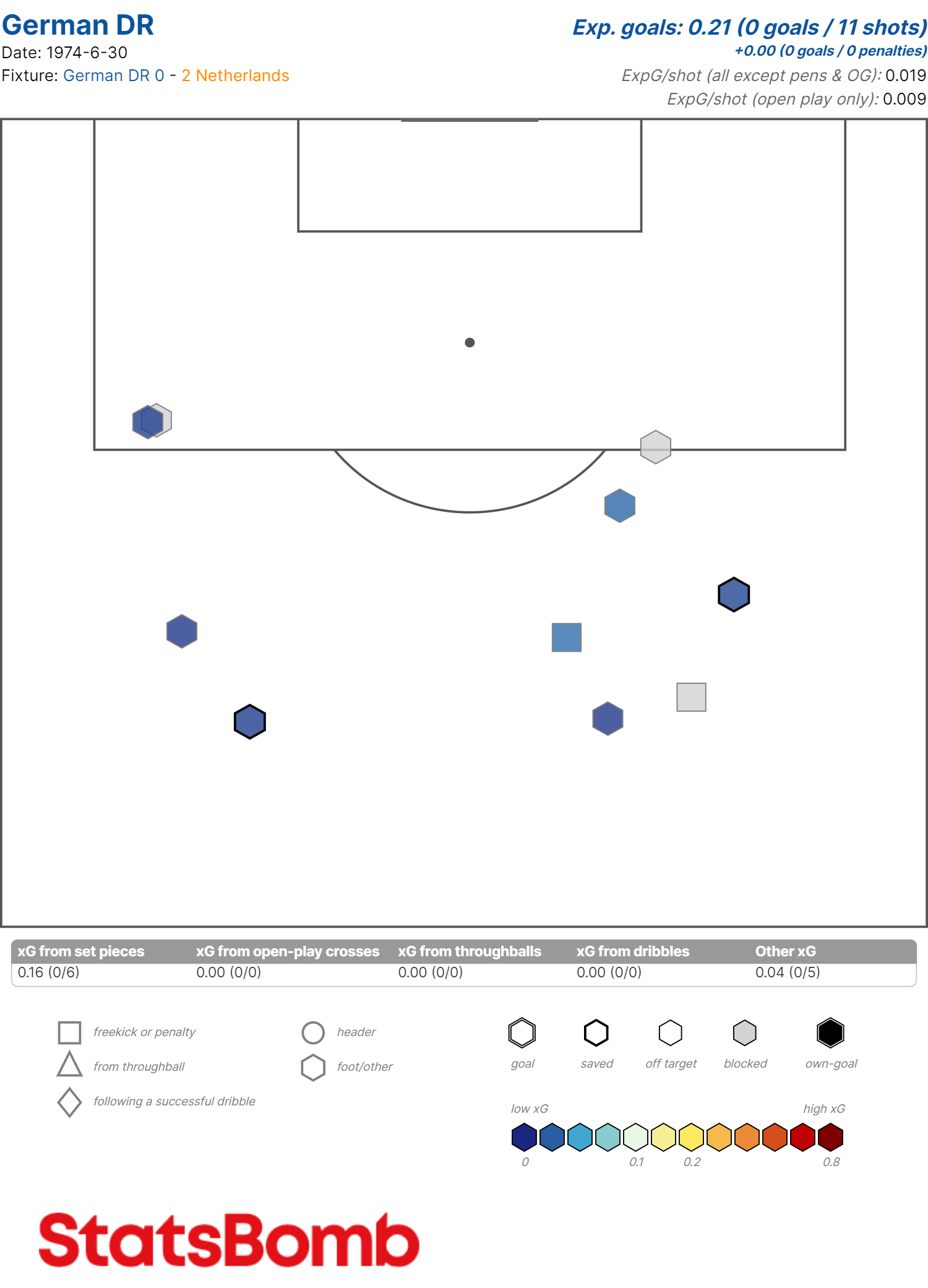
The average distance for these shots was 29.5 yards, at an xG per shot of 0.02. Alessandro Diamanti would be proud.
It came to the winner-takes-all match versus Brazil to decide who would advance to the final. You'd think the Netherlands versus Brazil in a 1970s World Cup semi-final would be an exhibition of technical and flamboyant football.
You'd be wrong.
A seemingly never-ending stream of dirty, and frankly dangerous, tackles ensued. Fifty-six fouls, many of them knee-high, somehow equated to only five yellow cards and one 85th-minute red.
The match itself was a close contest when the players weren't trying to cut each other in half. Brazil had their chances to win, creating 0.96 xG to the Netherlands' 0.75, but were wasteful, hitting the target with just one of their 14 shots.
Cruyff was – again - the difference maker for the Netherlands, assisting Johan Neeskens for the first goal before wrapping the game up with a majestic volley at the near post.
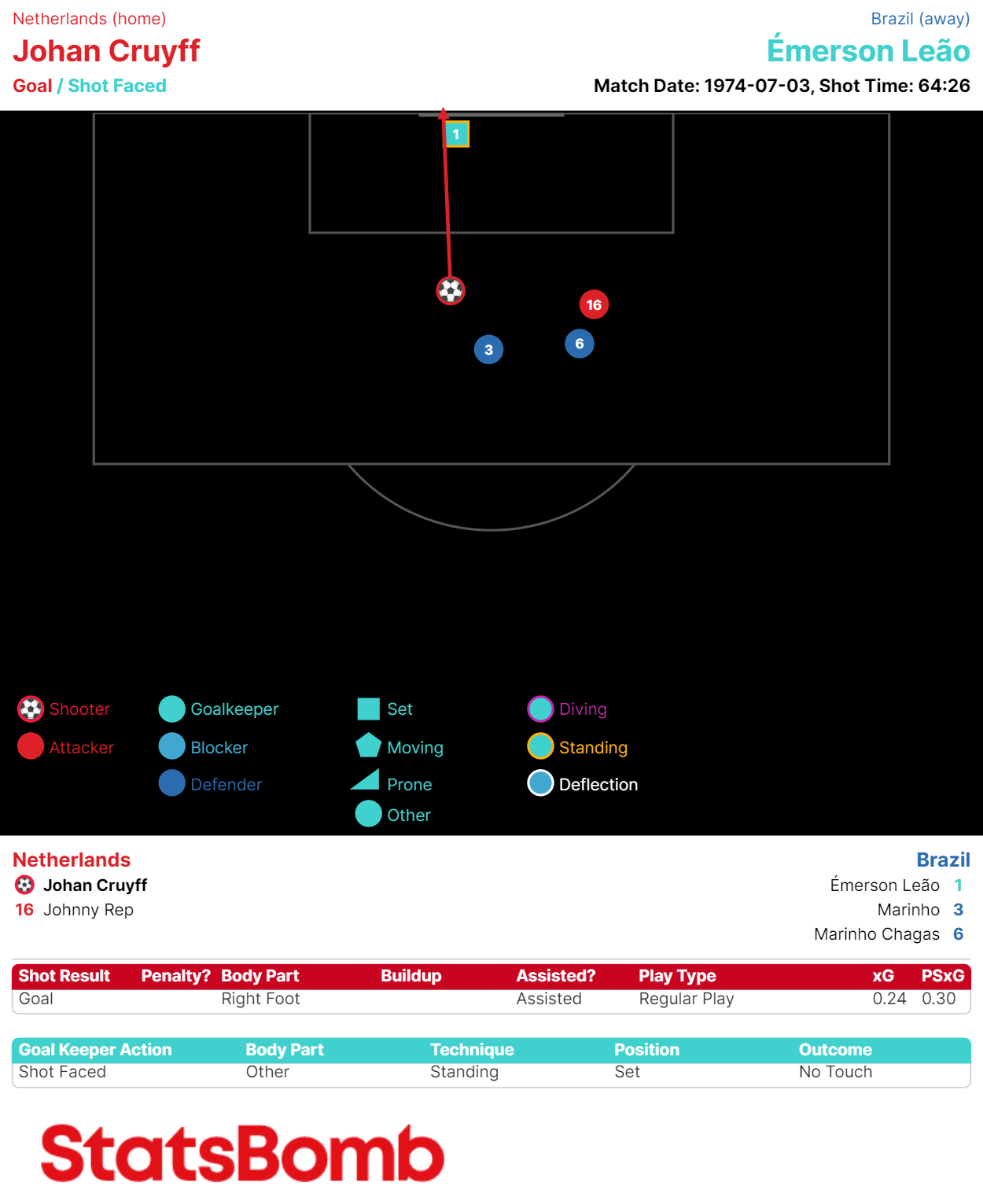
The Final: versus West Germany
After six matches and an aggregate scoreline of 14-1 (including 8-0 in the second group stage), the Netherlands were the experts' favourites to win the World Cup, despite West Germany's home advantage.
And that favouritism looked justified as the Dutch took the lead after just one minute – and before the West Germans had even touched the ball.
After 40 seconds and 14 passes, the ball reached Cruyff, who'd dropped into the first line of build-up. Cruyff set off on a trademark mazy dribble, accelerating through the German midfield and defensive lines before being scythed down by Uli Hoeneß as he entered the box. Johan Neeskens stepped up, converted the fastest goal ever scored in a World Cup final, and West Germany's first touches of the ball would be at 1-0 down.
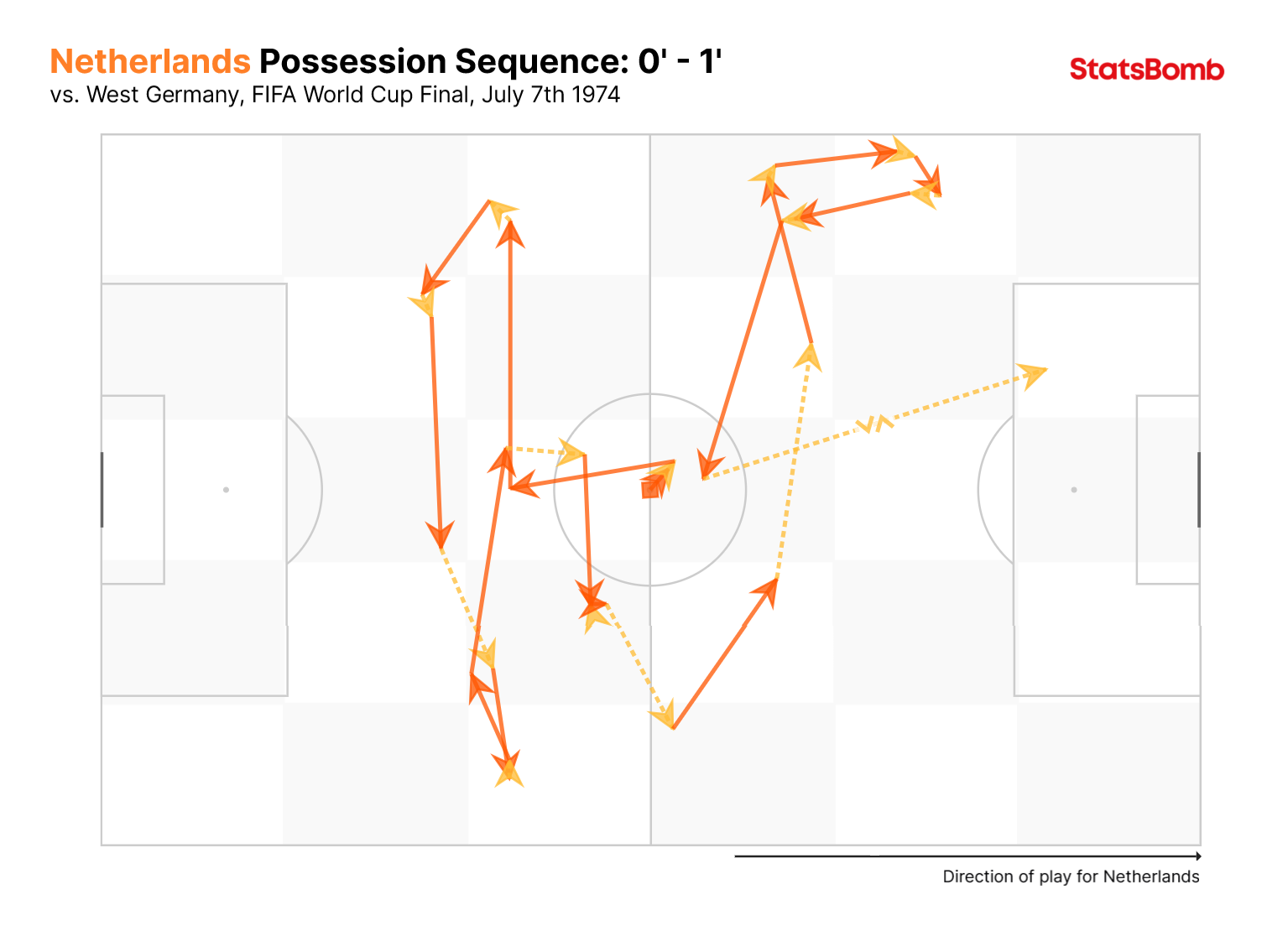
However, West Germany fought back. Paul Breitner equalised with a penalty of their own before Gerd Müller broke the then-record for the most goals scored in World Cup tournaments (14) to give them a 2-1 lead.
At half-time, the shot count read West Germany 9-3 Netherlands. The West Germans were succeeding in shutting Cruyff and the Dutch down, largely down to the man-marking of Berti Vogts and with Franz Beckenbauer, Wolfgang Overath, and Hoeneß flooding the midfield and restricting the space.
The Netherlands mounted a comeback of their own in the second half, creating 13 shots to West Germany's one, but it was to no avail. They were largely wasteful with their finishing and, on the rare occasion they weren't, found Sepp Maier performing heroics in the West Germany goal.
And so the Netherlands had to settle for second best. But Cruyff would win the World Cup Golden Ball and, later in the year, his third and final Ballon d'Or for his mesmeric performances at the tournament. Indeed, Cruyff was the top performer by our On-Ball Value (OBV) metric in four of the five matches we're releasing in this dataset, a model that values each action based on the +/- impact it has on the team's likelihood of scoring and conceding.
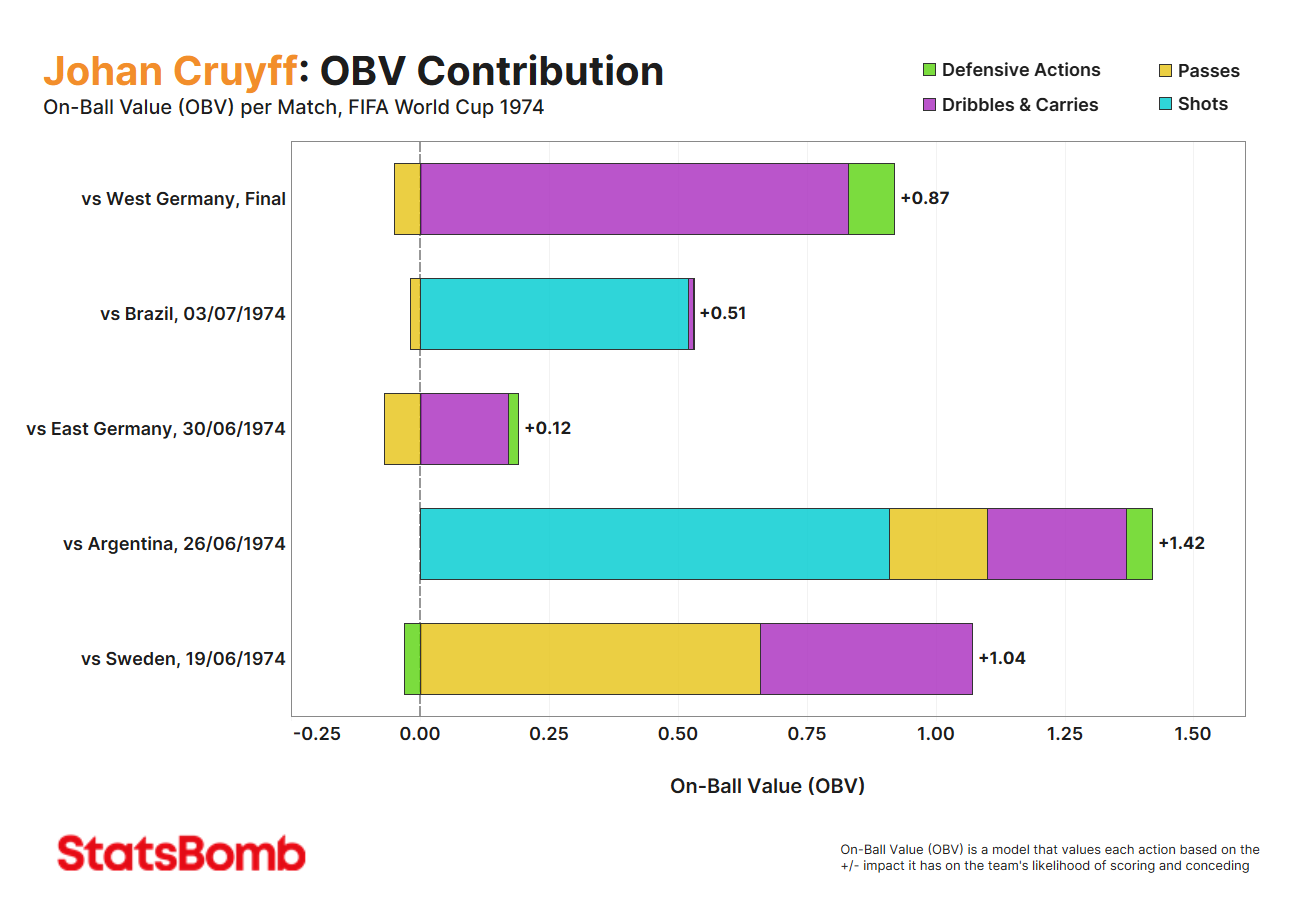
The Golden Ball and Ballon d'Or accolades would cement Johan Cruyff's legacy as one of the greatest players ever to have played the game.
Accessing The Data
We've provided R (StatsBombR) and Python (StatsBombPy) packages to make working with the data a little easier, and published a 'Working With StatsBomb Data In R' introductory guide to support and accelerate the learning process.
As the Cruyff dataset comes from multiple competitions and seasons, the easiest way to pull the data will be via the match IDs. Here's some sample code you can use to pull the data in both R and Python:
R
library(StatsBombR)
Comps <- FreeCompetitions()
Cruyff <- FreeMatches(Comps) %>%
filter(match_id %in% c("3888711", "3750235", "3888706", "3888716",
"3888717", "3888718", "3888719",
"3888720", "3888713", "3888754"))
events <-free_allevents(MatchesDF = Cruyff, Parallel = T)
events = allclean(events)
events<-merge(events, Cruyff, by="match_id")
events = get.opposingteam(events)
Python
ids = [3888711, 3750235, 3888706, 3888716, 3888717, 3888718, 3888719, 3888720, 3888713, 3888754]
events = []
for n in ids:
match_events = sb.events(match_id = n)
events.append(match_events)
events=pd.concat(events)
As always, if you use our data in any work you share publicly, please credit StatsBomb as the source (our logos can be found in our Media Pack).
We look forward to seeing what you can do with the data, and we'll be back soon with Icons #2 and #3.
*Please note that there were missing minutes from the video for a small selection matches. Subsequently, there are some games where the halves are slightly shorter than 45 minutes.
The StatsBomb Team
